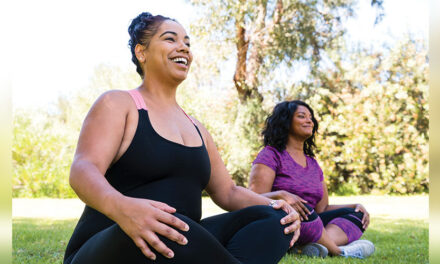Society has taught us that we are weak if we hurt or cry. We are conditioned not to feel our emotions, and we sometimes disconnect from our bodies as a protective mechanism to handle the pain. As an occupational therapist, I challenge my patients to feel and release those emotions that they have been holding in. Amazingly, when I perform myofascial release, patients often report a flood of repressed emotions. For some patients, pain relief begins when they let go and start listening to their bodies.
What the heck is fascia? Fascia is a thin casing of connective tissue that surrounds and holds every organ, blood vessel, bone, nerve fiber, and muscle in place. The tissue provides more than an internal structure; the fascia has nerves that make it almost as sensitive as skin. It is also a protector, allowing the body to resist forces/stress, both internally and externally. Fascial inflammation and restrictions occur because of trauma (physical and emotional), surgical procedures, poor posturing, infection, and inflammation, and are often the underlying cause of unexplained pain.
Fascia responds to gentle pressure and can only be accessed and released by someone trained in myofascial release. Traditional massage therapy methods tend to apply too much force, eliciting a protective response.
I was trained by John Barnes, a pioneer in this form of manual therapy. “Myofascial release leads to improvements in the body’s structural integrity and also seems to reach information in the subconscious. This provides the opportunity for patients to examine their emotional state, which may no longer be relevant and may hinder healing. This allows for self-discovery and the opportunity for improvement.” Barnes has a number of Youtube videos on his methods which have attracted a wide following.
Becoming a trained myofascial release therapist was a dream for me. I am an occupational therapist and have been working with the pediatric population for the majority of the past 14 years. The first myofascial seminar I attended was for pediatric patients.
At the time, I had a pediatric patient in physical therapy who couldn’t talk or move and was obviously in pain. Traditional therapy was not helping, but I had to find something to help this child. After the seminar, I met with my patient, gently placed my hands on his head, and felt things shifting beneath my fingertips. “Trust what you are feeling,” I recalled hearing at the seminar. The next thing I knew, the little boy’s tears were gone, his eyes were wide open like he was seeing the world for the first time, and his face softened.
From that point forward, myofascial release was the only continuing education I was interested in. I had no idea what was in store for me on this journey. And I am happy to announce that I opened my business, Renew Myofascial Release, in Bartlett at 3135 Kirby Whitten Pkwy, Suite 103.
Come to my workshop on the first weekend of each month, Myofascial Self-Care @ Downtown Yoga! Visit my website to get more info about my treatments and to schedule a visit: Renewmfr.com.
You can also find me on Facebook and Instagram @renewmfr, or contact me at [email protected] or 901.233.0293.
By Margaret Larson-Hinrichs







